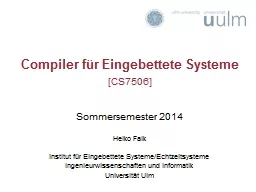PPT-Morals and Markets Armin Falk & Nora Szech
Author : clustik | Published Date : 2020-06-26
Toon Van Camp Table of contents 2 We have to ask where markets belongand where they dont Michael Sandel 3 Basic observation The trading of products often has
Presentation Embed Code
Download Presentation
Download Presentation The PPT/PDF document "Morals and Markets Armin Falk & Nora..." is the property of its rightful owner. Permission is granted to download and print the materials on this website for personal, non-commercial use only, and to display it on your personal computer provided you do not modify the materials and that you retain all copyright notices contained in the materials. By downloading content from our website, you accept the terms of this agreement.
Morals and Markets Armin Falk & Nora Szech: Transcript
Download Rules Of Document
"Morals and Markets Armin Falk & Nora Szech"The content belongs to its owner. You may download and print it for personal use, without modification, and keep all copyright notices. By downloading, you agree to these terms.
Related Documents














